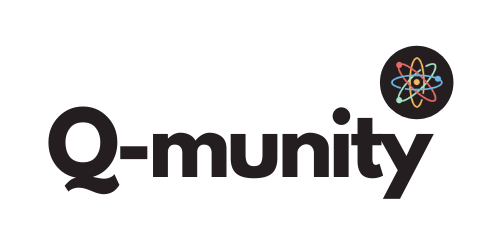The presence of quantum computing in the future of industries is undeniable. An awareness of the barriers in quantum computing education for students early on in their educational careers is necessary to encourage the next generation of quantum computing professionals.
The Accessibility Dilemma
Over the last few years, researchers have partnered with educators to bring quantum computing to students at the K-12 level. Certainly, the notion of quantum computing is curiosity-inducing. However, truly teaching the material – even for one or two days in a lesson plan – requires an ability to break abstract and complex topics down.
Most students at the K-12 level have yet to learn the intuition for understanding the likes of quantum mechanics or linear algebra. Certainly, they follow similar patterns to the multiplication, probability, and division, but the idea of, say, representing something as a “vector” – as opposed to just a scalar number – must be taught.
To do so, however, significant resources must be poured into preparing materials for, shaping a curriculum around, and building students’ background in relevant subject areas. In most areas, however, it is difficult to justify changes in a curriculum where already educators are unpaid and overworked. This arises in part due to infrastructural and socioeconomic walls.
Furthermore, students face pressures from their families, cultures, and communities. In some cases, schools may choose to prioritize subjects that align with materials covered in standardized testing. The exams are a standard way of evaluating the progress of students in schools across the country (which prove useful in college applications and identifying needs of school districts). Yet they restrict the creative and innovative power of teaching in the classroom, perhaps hinting at the need for more flexibility in school curricula.
As such, infrastructural barriers – relating to a lack of resources and need to adhere to strict standardized testing topics – block progress of education in the years K-12.
Specialized Quantum Computing Courses
As students progress in their education, the nature of the barriers they face in learning about quantum computing evolve. At the undergraduate level, some universities have begun to incorporate quantum computing courses. At the moment, though, these institutions are few and far between.
Part of the difficulty comes from the interdisciplinary nature of quantum computing. The field intersects with other areas, such as computer science, mathematics, physics, and electrical engineering. In traditional degrees, quantum computing may not explicitly fit into any one of the course progressions.
Unless specialized pathways are introduced, the course may instead fall in as an elective at best. Even then, mending knowledge gaps in areas outside students’ fields of study could make devising such a program daunting. In turn, limited mentorship by faculty who specialize in the field could present a road block. Without someone to guide their progression in the field, and no recommended progression in coursework, students may find their education in quantum computing slowed to a standstill.
This does not include the financial barriers. Many college students may juggle jobs and school. This is especially true when the responsibility of supporting their siblings or families – and themselves – falls on them alone. The cost of education to reach the necessary education level – oftentimes a Master’s or PhD – may exceed the return at the moment of working in the quantum computing industry. Students may instead choose to focus on building skills that may guarantee they have a job down the road, a valid decision. As such, understanding the personal responsibilities of students will play a large role in understanding how to construct a viable quantum computing program for career preparation.
Conclusion
Addressing these barriers in quantum computing education will require a multi-faceted approach. As administrators develop curricula at the K-12 and undergraduate levels, an awareness of resource constrictions, infrastructural and socioeconomic state, and the responsibilities in students’ lives could make a large difference in the success – or failure – of the program.







